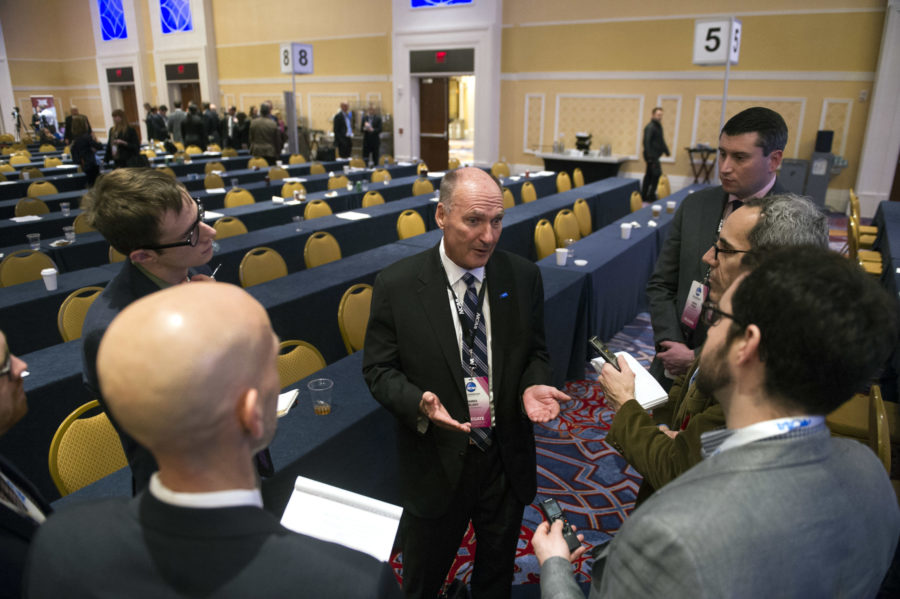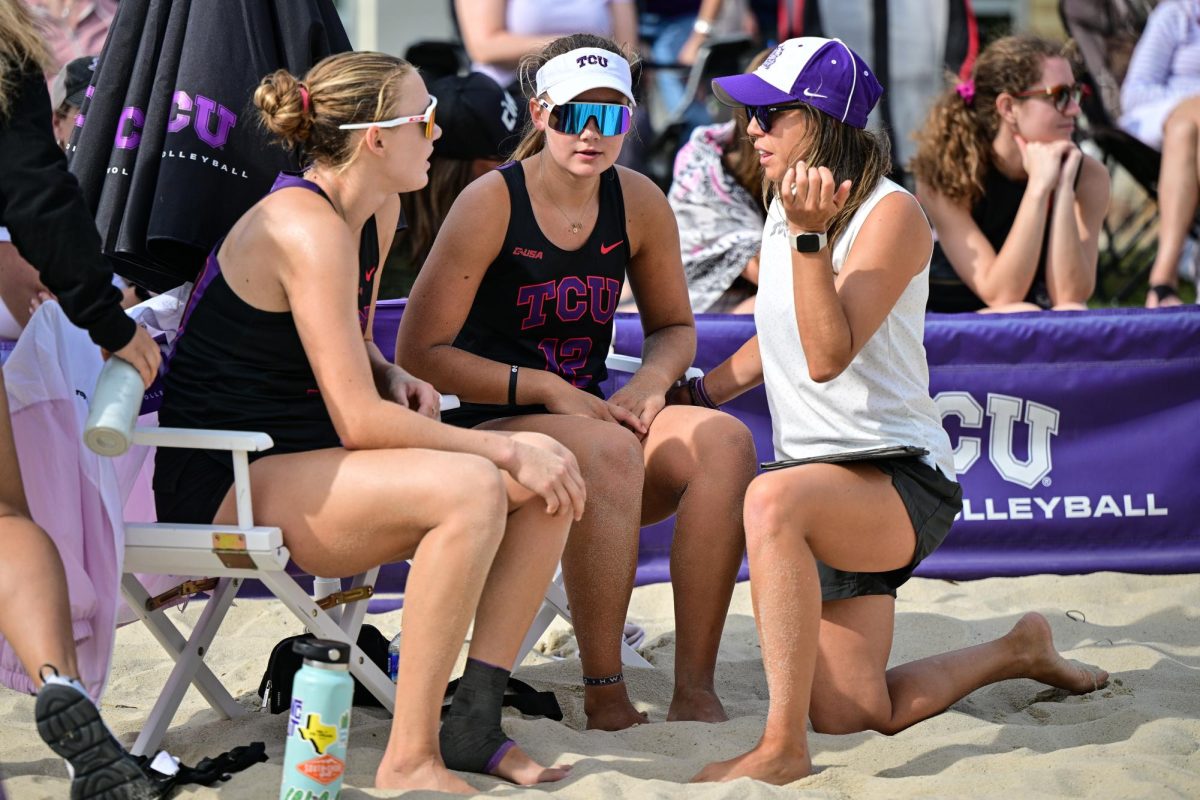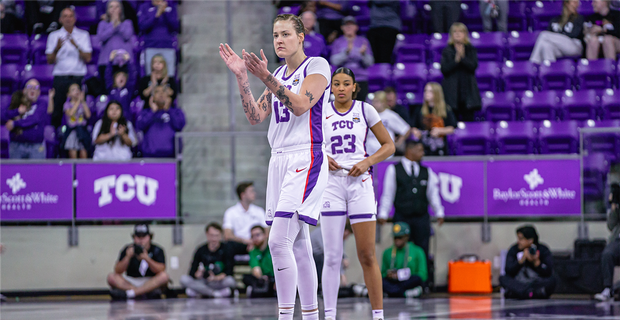Student-athletes could be getting more scholarship money next year, but they aren’t the only ones who would be reaping the benefits.
Officials in the Power 5 conferences — the Big 12, the SEC, the Pac-12, the Big 10 and the ACC — are discussing offering athletes up to full cost of attendance scholarships. If the Power 5’s autonomy legislation is approved later this month, these major revenue conferences would have the means to adopt the change.
“Nobody knows for sure, but the second this governance structure gets approved, which it almost certainly will (it’s very unlikely not to get approved in January), they’re going to push forward with the cost of attendance almost for sure,” Dr. Rhonda Hatcher, TCU’s faculty athletics representative, said.
Chris Del Conte, TCU’s director of intercollegiate athletics, said cost of attendance scholarships could be offered as early as next fall and would apply at some level to all scholarship athletes, both male and female.
Officials are also discussing guaranteed multi-year scholarships, name, image and likeness compensation, revamped student-athlete health insurance and more.
Currently, a full scholarship covers tuition and fees, room and board and books. A cost of attendance scholarship would likely include a stipend to cover additional living expenses. Student-athletes not on full scholarships would receive a reduced stipend based on the percentage of their scholarships.
“If you’re going to provide cost of attendance [scholarships], every student-athlete will get some version of cost of attendance,” Del Conte said. “If you’re on a full ride, you could get [the full cost]. [If you’re on a half scholarship], you could get half. But for every single person, something will be affected.”
Gretchen Bouton, senior associate athletic director for compliance and student services, said if the legislation passes, the changes would not be optional.
“The Big 12 [would] come out with legislation rules that [would] say ‘You will provide up to full cost of attendance,’” Bouton said.
What cost of attendance includes
Mike Scott, director of scholarships and student financial aid, said the miscellaneous costs associated with cost of attendance scholarships could entail various expenses. The federal government regulates what expense categories universities can include in their costs of attendance, but it’s not exactly straightforward, he said.
“The feds tell you what the categories are — they tell you nothing about how you determine what numbers to put in there,” said Scott, who has been involved in the NCAA’s cost of attendance discussion since it it was first pitched. “So you will see some discrepancies from one school to another as to how they calculate the miscellaneous costs.”
Scott said the numbers are broken up into direct and indirect expenses.
Direct expenses include tuition, fees and room and board; indirect expenses — the miscellaneous costs — could include transportation, travel fees, outside rent, books, groceries, clothing and more.
But the door is wide open, he said.
“You can kind of do whatever you want to in there,” Scott said. “Some schools might have costs for cell phones.”
Affecting non-athletes
Scott said the Office of Scholarships and Student Financial Aid considers both direct and indirect expenses when determining a student’s financial aid eligibility.
“The intent of that is to recognize that this student and their family are incurring other expenses related to the fact that they’re in college,” Scott said. “They’re not necessarily paying the school, but we recognize that in determining aid eligibility.”
Cost of attendance scholarships would fully or partially cover these indirect expenses. Scott said the potential addition of the scholarships caused financial aid offices to research how much those costs would total.
“Maybe you [had not] gone to the trouble for a couple years of researching that,” Scott said. “I’ve been doing this for 27 years, and not one single time in 27 years has anyone asked me about how we come up with our cost of attendance. Now I’m getting the question three times a day. Now everyone wants to know because it has entered the realm of athletics.”
Scott said TCU surveyed students this year and found its estimate for total indirect expenses was “fairly low.” Scott said the numbers are still being finalized, but the updated figure would be much higher.
“I think it will be several thousand dollars higher than it is now,” Scott said. “I think I can be safe saying that.”
Student-athletes would be more interested in that number. But the higher number would be good news for all students.
If the indirect costs raise the total cost of attendance, all students could see adjustments in their financial aid packages.
“it could affect everyone’s financial aid eligibility in a positive way,” Scott said. “It just helped the budget guys see ‘Well, we need to probably shift some more money into financial aid than we would have.’ Some schools won’t be able to do that.”
Scott said some universities want to just increase the cost of attendance for athletes. That won’t happen at TCU, he said.
“If it’s legitimate costs, which it would have to be to include it, then we’re not going to only do this for athletes,” Scott said. “We’re going to do this for all students.”
Potential problems
While TCU and other universities will raise their costs of attendance, Scott said it is mainly because they noticed their numbers needed to be updated.
“I don’t think schools said, ‘All right, we’re going to raise that so our athletes can get more money,’” Scott said.
But since schools have different costs of attendance, some universities could try to use that to their advantage, Scott said.
“It clicked for the first coach and he said ‘Wait, Baylors’ cost of attendance is higher than mine,’ ” Scott said. “Then Baylor can say to this athlete, ‘Well, if you come here, we’re going to give you $2,000 more.’ ”
Hatcher said the new scholarships definitely help recruiting, even if not just for the schools that approach it that way.
“TCU knows this from being in and not being in one of these conferences: you have a gigantic recruiting advantage just off the top,” Hatcher said. “But it doesn’t take a rocket scientist to figure out that there’s a recruiting advantage to giving more money.”
Schools also have to be able to fund the additional scholarship money. It may not be a problem now, but with more potential changes down the road — such as name, image and likeness compensation and upgraded health insurance for student-athletes — funding could become an issue, Scott said.
“If you’re letting it get too out of hand and that money has to come from somewhere, well where’s it going to come from?” Scott said. “You just hope it’s not other financial aid programs. Here, I don’t think that would ever happen, but it could at some schools.”
Chancellor Victor Boschini mirrored that thought after the fall Board of Trustees meeting in November. He said rising athletics costs would not just affect the athletics department.
“All the money’s the same because it’s TCU. I think you should consider you’re paying for everything if you’re a student, I really mean that,” Boschini said. “But you would hope ticket sales and ticket prices for the stadiums now would pay for all that.”
For now, student-athletes and non-athletes can both look toward the cost of attendance changes.
More changes will follow suit.
“We don’t even know what all that is going to be yet or how much all that is going to cost,” Boschini said. “And that’s part of the issue.”






